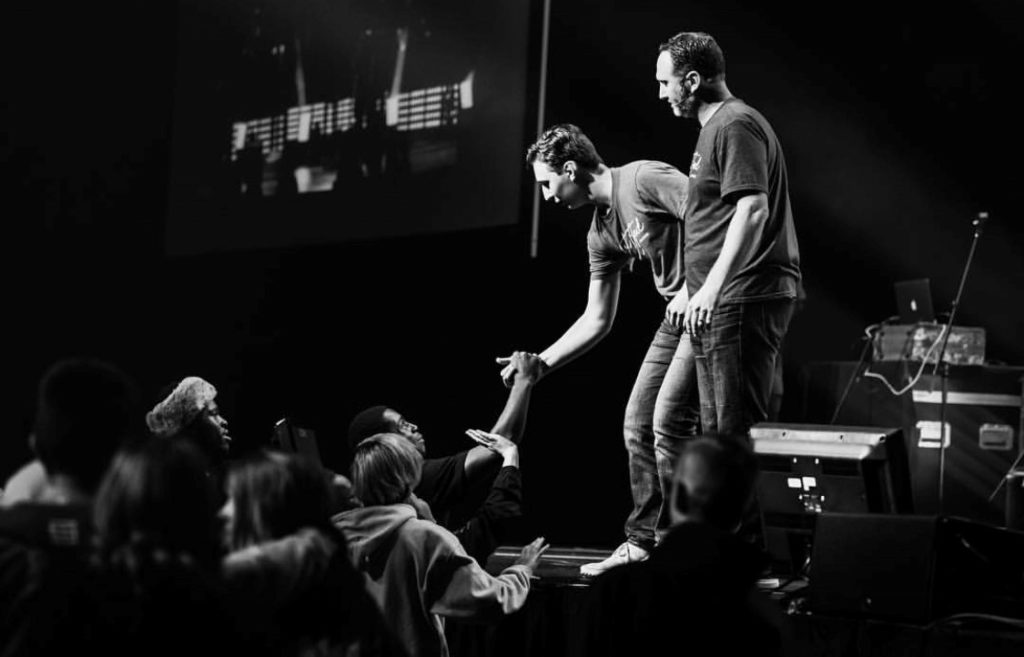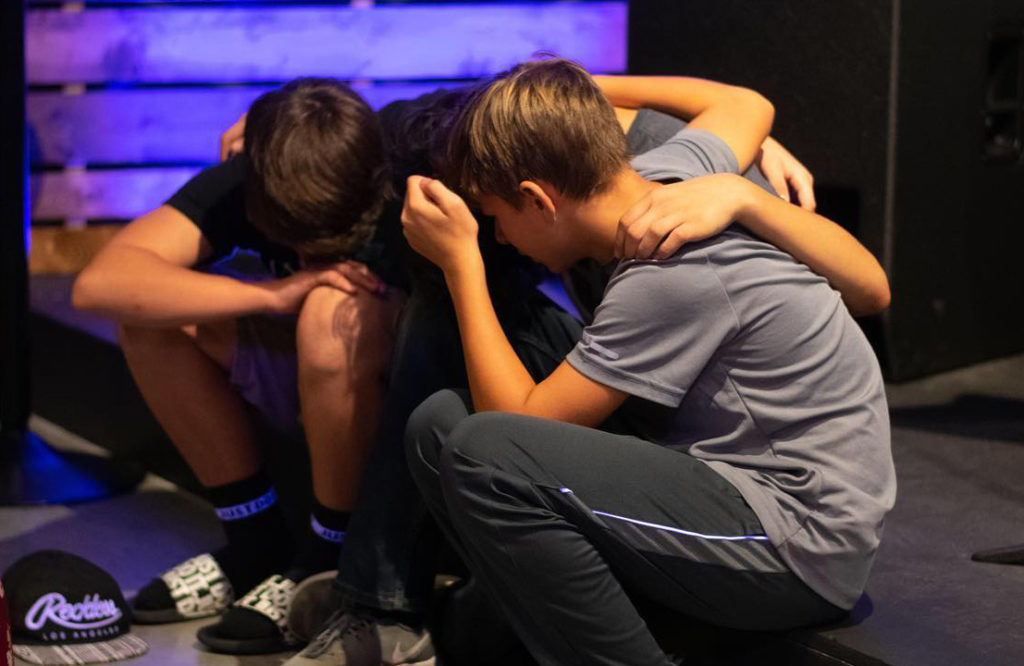
SOMERVILLE, Tenn. (BP) – A steady stream of teenagers is coming to faith in Christ at Fayette Baptist Church.
Madison had been attending the Memphis-area church for a year and a half and let youth leaders know she didn’t have a personal relationship with Christ. More than 25 people began praying for her salvation. Then at a Disciple Now event with the theme “Jesus is King,” she trusted Christ as Savior.
Payne likewise attended for months without knowing Jesus. One Sunday morning, next generation pastor Jon Gambrell noticed another student sharing the Gospel with Payne between Sunday School and worship. Through tears, he prayed to receive Christ.
In all, Fayette’s youth ministry, which averages 100–120 in weekly worship, saw some 20 teenagers baptized last year. Such fruitfulness stems from a culture of discipleship.
“A group of my emerging leaders likes to meet on Wednesday before my youth service,” Gambrell said. “We take them through multiple layers of discipleship from apologetics to how to share your faith.” Young men called to ministry learn to preach. Other students learn to teach Bible studies. “But their favorite thing to do is go out door to door” sharing Christ, he said.
Churches across the SBC will need to develop a similar culture of evangelism and discipleship among their students if the Convention is to achieve the fourth goal proposed in Vision 2025: Reverse the ongoing decline in reaching, baptizing and discipling teenagers.
Meeting that goal would mark a stark turnaround from the SBC’s decades-long slide in youth baptisms. Convention-wide baptisms of 12- to 17-year-olds are down 38 percent from 2000 and 47 percent from 1980.
In conjunction with Vision 2025, the North American Mission Board is investing $5 million in student evangelism over four years – in addition to the millions already earmarked for reaching teens. Still, youth ministry leaders are asking whether enough churches will reenergize their student ministries to reverse the baptism decline.
To reach teens for Christ, youth ministries need to get involved in their communities, and youth pastors need to provide regular opportunities for students to respond to the Gospel, said Ben Trueblood, director of student ministry at Lifeway Christian Resources. He fears Gospel invitations are disappearing from youth ministry.
“It’s a mistake to completely remove the public invitation and public explanation of the Gospel and how to follow Jesus,” Trueblood said. “That is something we’ve seen happen in student ministries” as an overcorrection of manipulative invitations. “A healthier approach” is non-manipulative invitations, he said.
Building relationships with teenagers also is central to healthy youth ministry in the 21st century, Trueblood said. In contrast to the event-driven youth ministry of previous generations, many successful student ministries are utilizing a “relational, adult volunteer-driven” model that assigns big events like camps and rallies a more focused role than they played in the 20th century.
Teenagers “seem to be slower to respond [to the Gospel] than in decades past,” he said. “Whereas in the ‘90s and early 2000s of student ministry, you could load a room and give an invitation and you would see a lot of response, now students are taking it slower. They’re wanting to have more conversations.”
That shift, Trueblood said, necessitates follow-up to big events and ongoing dialogue with youth.
Trueblood is not alone in strategizing about how to reach more teenagers. In February, student ministry leaders from SBC entities, state conventions, and churches convened a day-long Zoom call to compile suggestions for reaching students. Among the sixteen actions they proposed for churches:
- “Create evangelistic opportunities where lost teenagers hear the Gospel proclaimed and are given an opportunity to respond.”
- “Teach theology that leads to a biblical worldview and Jesus-centered living.”
- “Envision a 17-year-old, fully devoted follower of Christ, and shape every element of student ministry to that end.”
Caleb Freeman, 19, is the type of young adult the student ministry leaders hope youth groups will produce. Son of Oklahoma pastor Jeremy Freeman and grandson of evangelist Ken Freeman, Caleb was in a near-fatal car wreck at age 16 from which he suffered brain trauma. It took months of rehab for him to walk again. His speech was altered too.

But amid his recovery, Caleb Freeman realized he had never trusted Christ as his Lord and Savior. He made that commitment, was baptized, and has been “consumed with Christ” ever since, his father said. Now Caleb and Jeremy Freeman speak at student events around the country, sharing their story. Thousands have been saved as a result.
Jeremy Freeman believes a component of reaching more teenagers is sharing powerful salvation testimonies like Caleb’s. The Freemans are developing a “But God” app to which testimonies can be uploaded and used as a witnessing tool.
“It’s not about Caleb. It not about the individual,” said Jeremy Freeman, pastor of First Baptist Church in Newcastle, Okla. “When God redeems someone and they have a powerful story to tell, I think God uses [those] stories because they really resonate with people’s hearts.”
Stories of redemption continue to resonate back at Fayette Baptist. Last month, Gambrell overheard a 15-year-old boy sitting with a visitor after a worship service and telling him, “Jesus is the only way to have your sins forgiven.”
“That solid presentation of the truth in an authentic way is very powerful,” Gambrell said. We “don’t have all the answers, but we know who the answer is.”




















